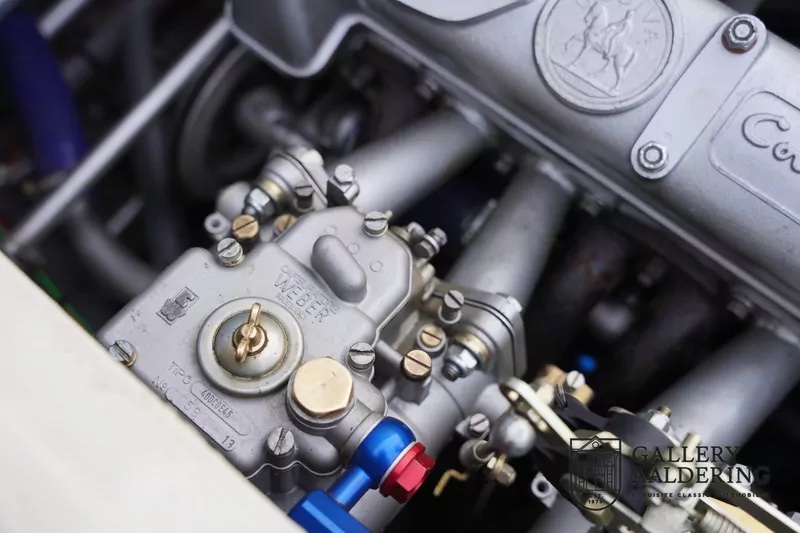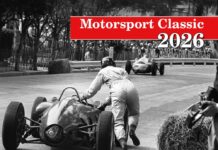To be one with the car, its mechanics and to be able to imaging cornering, that is the true essence of driving,. It was how Colin Chapman imagined and marketed probably one of the most famous brand in that fashion; the Lotus. In the same social circle as Chapman, Edward Snusher in the early 50’s is convinced he too can produce a car from scratch. Many have tried but few have succeeded to build a car that could compete with the big boys. Snusher manages it: may we therefore introduce the EJS-Climax.

Snusher had no direct links to car racing sport, but an enormous drive to build his own racing car. Now there are thousands who want to do that, Snusher being no dreamer engages with gusto to design and build a car to compete with the likes of Lous, Cooper, Elva and Trojeiro. Snusher is someone with lots of technical know-how and wants to build a competitive car, not one to just join the pack at meetings. The result was a racer that superficially is slightly similar to Lotus’s of that era but underneath has some things more ingenious than its bigger brothers.
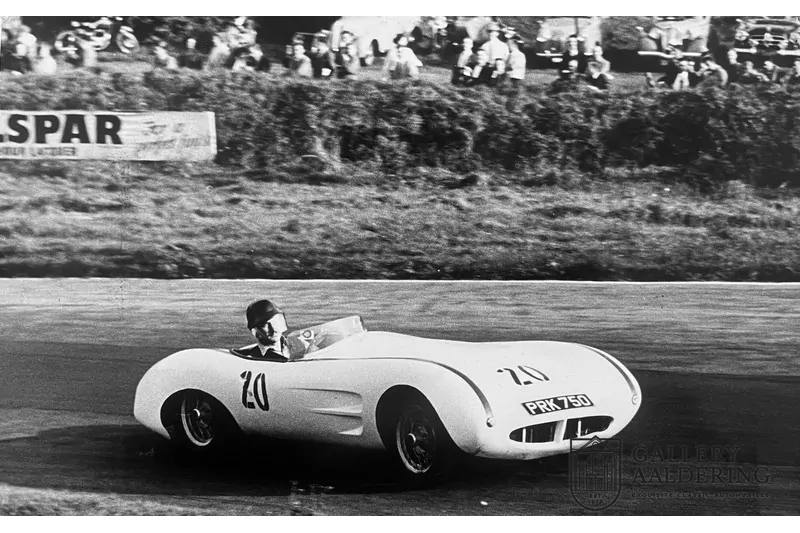
EJS Climax
The car has an alloy tubular space- frame with a truly fabulous high quality finish, equal to any found in those of the big boys. The frame itself only weighs 22 kg, with another 8 kg added for the aluminium cockpit panels. The front suspension consists of a transverse placed leaf spring with underneath diagonal shock breakers. The whole construction is rather clever, the two Y-shaped support beams with their shirt arms fixed o the middle and the two connected together by a spring. It may all sound a bit technical, but it works. Snusher wanted a fully adjustable suspension system with camber and caster kept equal under all circumstances, a fait he managed well. The rear suspension is somewhat more conventional. Snusher went for a De Dion set-up, utilising two parallel tubes instead of the usual single arm. The rear brake drums are flush with the differential, the front drums are fairly standardly mounted inside the wheels.
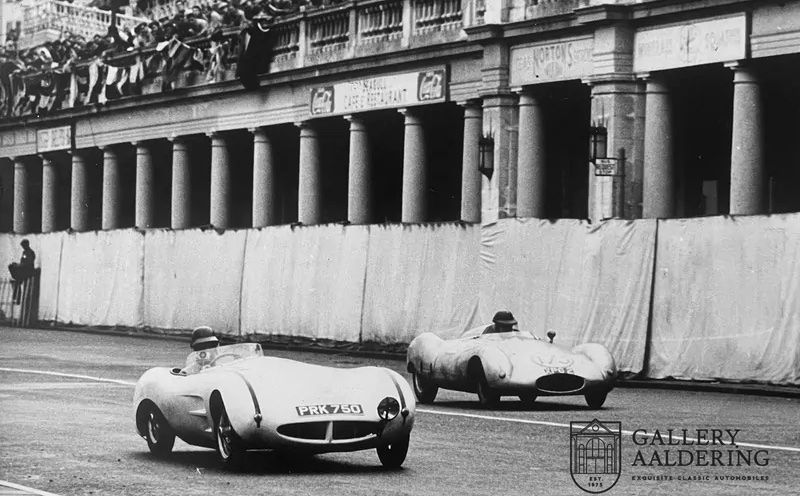
Whilst Snusher’s most important wish was to keep the weight as low as possible, the power plant is of course of essential importance too. Under the bonnet we find a four-cylinder Coventry-Climax FWA. Lightweight, strong and the 1,089 cc engine is easy to tune, producing 71 hp.

Edwin started his project in 1954 and two years later he ready for the start of the August race meet at Crystal Palace. In his debut race Snusher ends of a very respectable fourth. He enters that seasons Goodwood race but cannot start due to a breakdown. He does feature on the starting list and that will prove fortuitous years later. After a minot accident at Brands Hatch Snusher decides to quit car racing and the EJS-Climax ends up in his shed. Without engine and gearbox, that had been sold, it remained there until 2001. After a few years Snusher’s stepson busies himself with the car with the EJS being fully restored. The restoration must be flawless with everything as fine and perfect as the original. The work is aided in no small part by the presence of piles of photos from the 50’s detailing the build, the frame construction, the suspension system, literally everything. An original FW400 engine was sourced, identical to the one once seated in the space- frame and gearbox. Engine and transmission are so correct that it has been given FIA papers (Period E, 1947-1960, Special, HS4), meaning it can participate in almost every classic race as well as in something as the Mille Miglia. Perhaps of greater importance is the inclusion in the staring line-up of the 1956 Goodwood race; taking part in the Goodwood Revival race is certainly on the cards. There is no better race imaginable where this EJS-Climax shines more.

Standing next to the car you only then realise how petite the just over 400 kg single-seater is. Petite, long and slim-lined. Many of these type of projects just miss the boat with their lines, the EJS-Climax stands out with its incredible beautifully sculpted figure. The fibreglass bodywork could just as easily have been draw by one of the great designers.
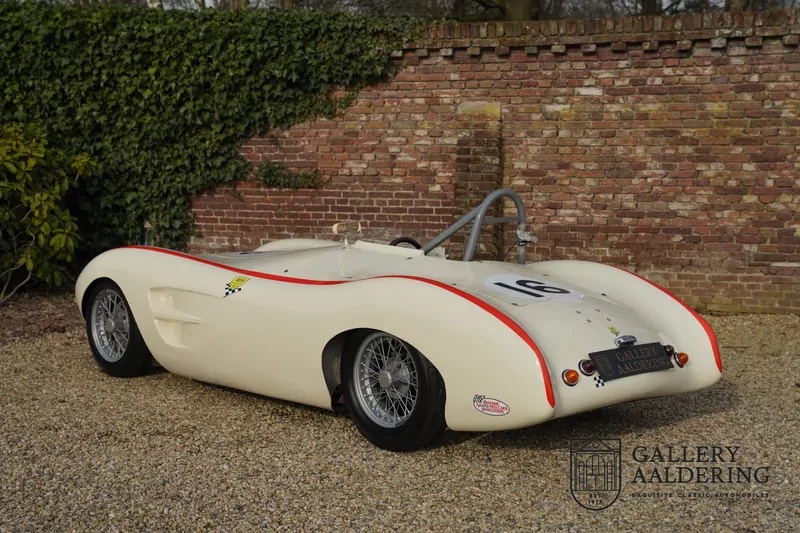
Once in place in the small seat, the car fits like a cloak, a very snug fitting one at that. The pedals are heavy, the small steering wheel requires strength. Taking off is much the same; the racing clutch, the wheel axles and camshaft and instant throttle response immediately remind you you are in a hardcore racing machine. Once on your way the car comes fully into itself. The steering is precise, no longer heavy with small corrections immediately translated into a change of direction.

Corning the EJS-Climax is incredibly exact with lots of feedback. Many cars tend to stick their tails out, the Climax’s rears follow as if on rails. Unbelievable what Snusher managed to produce over 65 years ago! Driving on the public road is a bit of an insult to the EJS-Climax, although perhaps an exception could be made for the Mille Miglia. If you want to push your skills and the EJS-Climax to the hilt you need to take her to a circuit for a fantastic day out, before driving home.
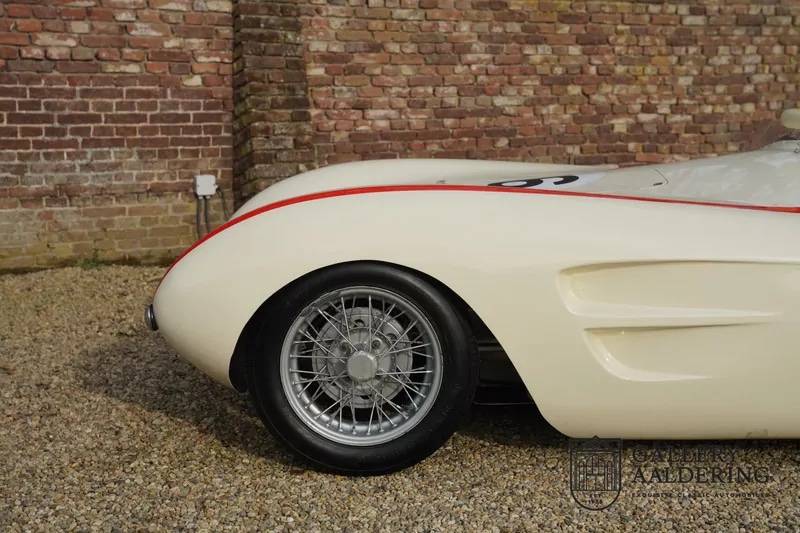
The Goodwood Revival has to be the ultimate place for this unique car to shine.
A car that was a dream come true, a car that drives like a dream and is ready to fulfil the next owner’s dream! The car is for sale and available at Gallery Aaldering.


